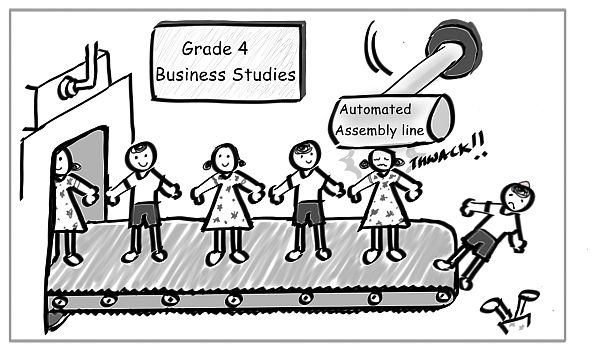Paul Rosenberg – Let me begin by making two things clear:
- First: Most upper middle class people have no intent to oppress. They’ve found themselves in an assigned role, and they are simply playing it. And let it further be said that the other class-groups (poor, lower middle class, etc.) would do precisely the same.
- Second: This article addresses the current role of the upper middle class in the West and especially in the US. It does not address other places or times.
That said, and as someone of upper middle class background myself, I want these people to do better than to amorally play a role. They are educated, literate, and generally quite able. If and when they decide to find the truth of things, they are able to do so. I want these people to reclaim their morals and place them above wealth and status. The poor aren’t nearly as able, and the lower middle class are more restrained. We who are able, must do.
How Their Role Formed
The current ruling structure in the West derives from the industrial society that thrived from roughly 1910 through 1980. That system was designed to reap the production of industrial workers; everything from withholding taxes to government schools was put in place to maximize the take. Whether purposely or by trial and error, the Western world was structured to keep industrial workers moving in a single direction and to reap from them as they went.
 Between 1979 and 1981, however, things turned, and the industrial workforce steadily declined. But the elite class (we’ll define them some other time) was in no position to rebuild the structure. So, they adapted as best they could. Among other things, stock and bond markets, which had previously been for “rich people,” became the destination for everyone’s retirement money. IRAs and 401(k)s were enacted and popularized at just this time. Exporting dollars for foreign goods became policy at this time too.
Between 1979 and 1981, however, things turned, and the industrial workforce steadily declined. But the elite class (we’ll define them some other time) was in no position to rebuild the structure. So, they adapted as best they could. Among other things, stock and bond markets, which had previously been for “rich people,” became the destination for everyone’s retirement money. IRAs and 401(k)s were enacted and popularized at just this time. Exporting dollars for foreign goods became policy at this time too.

 Last week I covered the structural dynamics causing the decline of the middle class. In general, the costs of untradable services (healthcare, higher education, government) and the rot of financialization have increased while wages have stagnated. The Federal Reserve’s “solution” was to make everyone who owned a house a speculator who could only keep even with rising costs by riding the asset bubbles higher and then extracting the “free money” generated by these bubbles before they popped.
Last week I covered the structural dynamics causing the decline of the middle class. In general, the costs of untradable services (healthcare, higher education, government) and the rot of financialization have increased while wages have stagnated. The Federal Reserve’s “solution” was to make everyone who owned a house a speculator who could only keep even with rising costs by riding the asset bubbles higher and then extracting the “free money” generated by these bubbles before they popped.